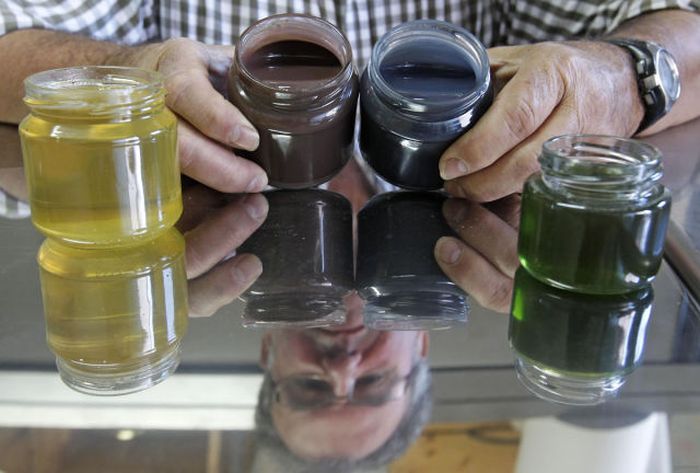|
|
Bees Make A Different Honey, France
|
Pollination
Bees play an important role in pollinating flowering plants, and are the major type of pollinator in ecosystems that contain flowering plants. Bees either focus on gathering nectar or on gathering pollen depending on demand, especially in social species. Bees gathering nectar may accomplish pollination, but bees that are deliberately gathering pollen are more efficient pollinators. It is estimated that one third of the human food supply depends on insect pollination, most of which is accomplished by bees, especially the domesticated European honey bee. Contract pollination has overtaken the role of honey production for beekeepers in many countries. Monoculture and the massive decline of many bee species (both wild and domesticated) have increasingly caused honey bee keepers to become migratory so that bees can be concentrated in seasonally varying high-demand areas of pollination.
Most bees are fuzzy and carry an electrostatic charge, which aids in the adherence of pollen. Female bees periodically stop foraging and groom themselves to pack the pollen into the scopa, which is on the legs in most bees, and on the ventral abdomen on others, and modified into specialized pollen baskets on the legs of honey bees and their relatives. Many bees are opportunistic foragers, and will gather pollen from a variety of plants, while others are oligolectic, gathering pollen from only one or a few types of plant. A small number of plants produce nutritious floral oils rather than pollen, which are gathered and used by oligolectic bees. One small subgroup of stingless bees, called "vulture bees," is specialized to feed on carrion, and these are the only bees that do not use plant products as food. Pollen and nectar are usually combined together to form a "provision mass", which is often soupy, but can be firm. It is formed into various shapes (typically spheroid), and stored in a small chamber (a "cell"), with the egg deposited on the mass. The cell is typically sealed after the egg is laid, and the adult and larva never interact directly (a system called "mass provisioning").
In New Zealand scientists discovered that three genera of native bees have evolved to open flower buds of the native mistletoe Peraxilla tetrapetala. The buds cannot open themselves but are visited by birds such as the tui and bellbird which twist the top of the ripe bud. That action releases a mechanism which causes the petals to suddenly spring open, giving access to the nectar and pollen. However, when observing the native bees in the Canterbury province in the South Island, the scientists were astonished to see the bees biting the top off the buds, then pushing with their legs, occasionally popping open the buds to allow the bees to harvest the nectar and pollen, and therefore aid in the pollination of the mistletoe which is in decline in New Zealand. Nowhere else in the world have bees demonstrated ability to open explosive bird-adapted flowers.
|
|









